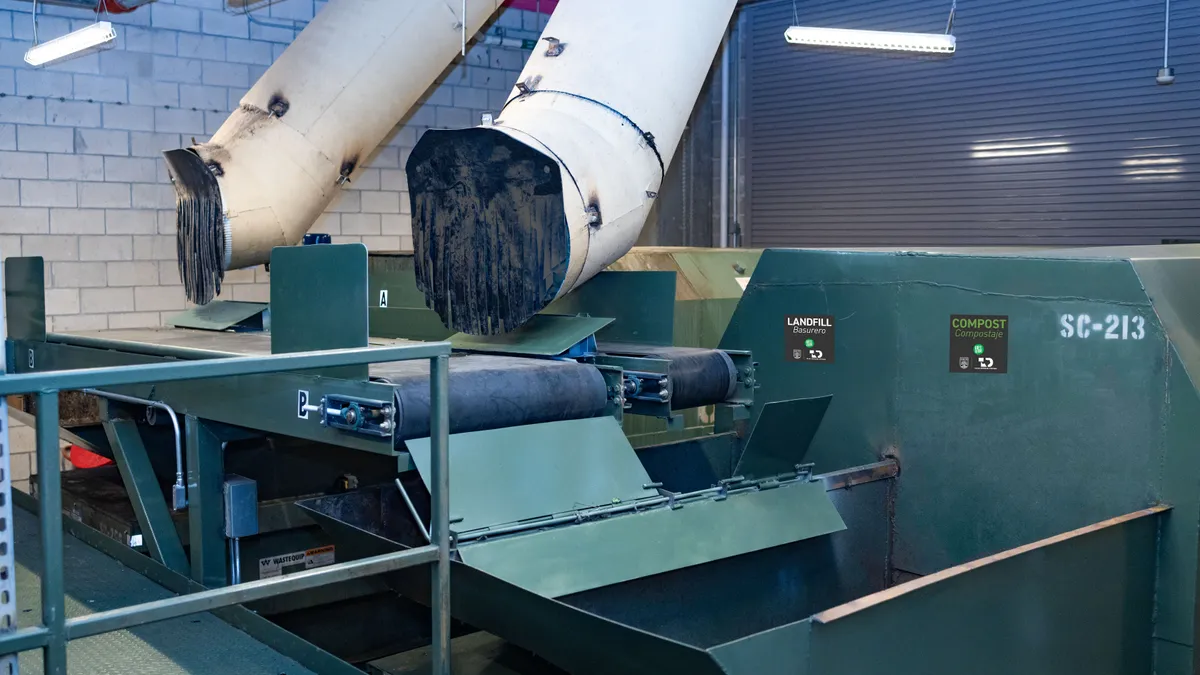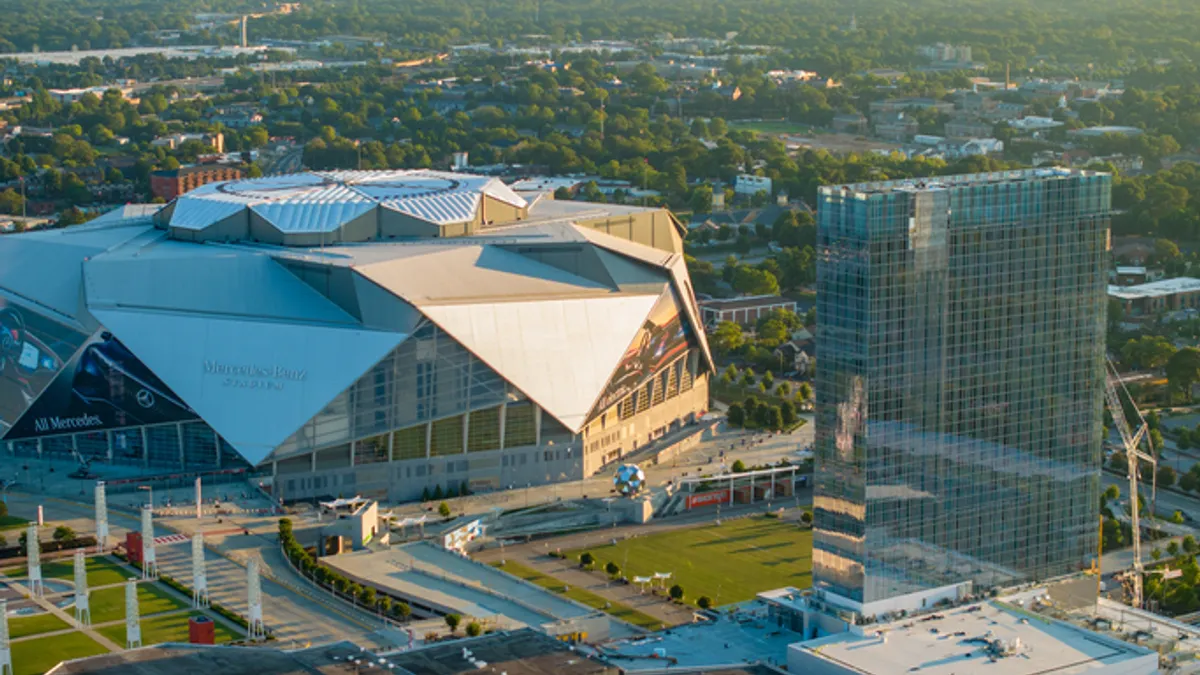Soccer fans in Austin, Texas, are serious about their sport — and serious about the sustainability-focused amenities in Q2 Stadium where their team plays.
A new “mini MRF,” built inside the stadium, isn’t visible to Austin FC fans. Yet the custom-built equipment is a key to helping the stadium achieve a zero waste designation from the U.S. Green Building Council.
Texas Disposal Systems, Austin FC’s recycling partner since 2020, designed and built the equipment to process about seven tons of materials each game day, or about 1.5 tons per hour. It sorts recycling, compost and waste streams.
Though TDS had never built a MRF inside a soccer stadium before, “we've historically custom made a lot of our own recycling equipment, so we had the expertise and the experience to come up with this system,” said Adam Gregory, vice president of business development.
The stadium, which opened in 2021, is working to achieve its Total Resource Use and Efficiency (TRUE) Certification, the highest level of certification for zero waste facilities under the USGBC. As part of the certification, building operations must show the facility can reach a 90% diversion rate over a year-long period.
Since installing the MRF, it has been much easier to hit those diversion rates, and “we're now very, very close to that zero waste designation. That will be big for us, big for the fans,” said Nick Otte, senior director of stadium operations for Austin FC.
The mini MRF inside the stadium looks different than a typical MRF operation, in part because the space dedicated to the equipment is so small. A combination of compactors and two conveyors help move materials through the stadium and sort them into cleaner streams.
After processing at the mini MRF, the material goes to TDS’s much larger 150,000 square foot facility just south of Austin. There, organics go into TDS’s composting operation, solid waste goes to its landfill, and recyclables are further sorted in its large-scale MRF.
“Our partnership benefits in multiple different ways, and part of that is increasing the amount of material we’re able to divert,” Gregory said. TDS gets cleaner recycling and organics streams while also decreasing the number of truckloads it hauls from the stadium because of the on-site compactor.
Along with the new MRF, the stadium has also made other sustainable improvements, such as working with vendors to offer compostable packaging or find ways to avoid packaging altogether. “In the last year and a half, the waste diversion element of our sustainability platform has really come to the forefront,” Otte said.
That’s especially important in Austin, a city that prioritizes green initiatives, Otte said. “You learn pretty quickly that sustainability, and waste diversion specifically, are table stakes for a lot of people involved. That includes our organization, our fans and city leadership.”
The Q2 stadium’s zero waste goal parallels that of the City of Austin, which has a goal to divert 90% of waste from disposal by 2040.
During games, Austin FC fans value having recycling and composting options, and visitors have even suggested adding more recycling bins in more areas of the stadium, Otte said.
That dedication has made the MRF project much more successful, Gregory added. “It would be much, much more difficult to get the kind of diversion if the fans weren't already doing a fantastic job of putting things in the right container,” he said.
The Q2 Stadium joins other sports stadiums across the country that have added new zero waste or recycling programs. State Farm Arena in Atlanta was the first sports venue to achieve TRUE certification in 2022. In 2023, the city’s Mercedes-Benz stadium followed suit. Austin’s Q2 Stadium is currently TRUE pre-certified, which indicates a facility is on the path to achieving the necessary zero waste metrics.
The partnership between Austin FC and TDS will continue to evolve — and might involve more kinds of recycling innovations in the future, Otte and Gregory said. “When we have a shared goal, that's really the most important thing,” Gregory said. “Because of that, we were able to say, ‘Let's invent something that's never been done before.’”















